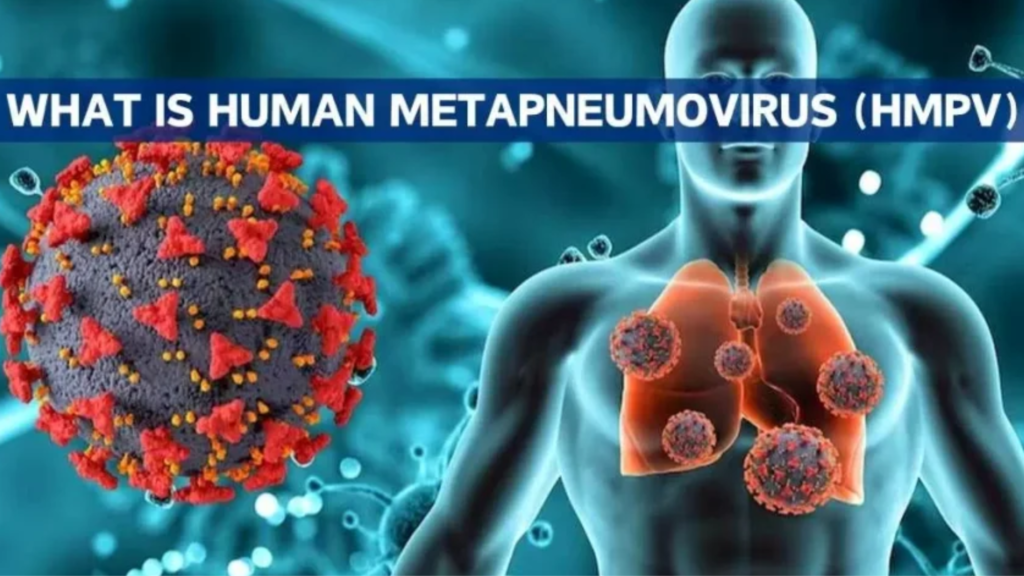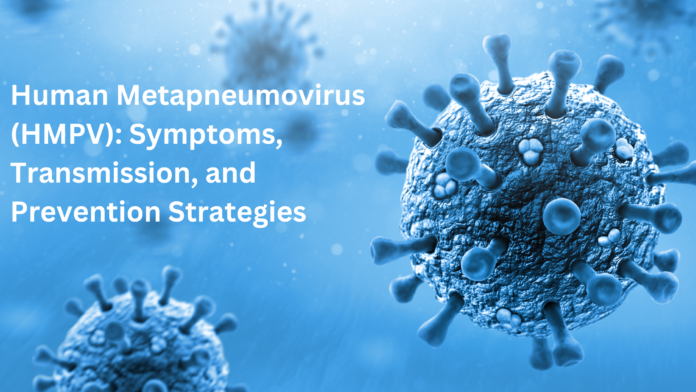People of every age group suffer from Human Metapneumovirus (HMPV) but the greatest impact is among small children and senior citizens together with patients who have compromised immune systems. Upper and lower respiratory tract infections rank among the main diseases caused by Human Metapneumovirus which doctors frequently confuse with flu and common cold viral infections. Learning about Human Metapneumovirus symptoms and its transmission patterns and prevention strategies will decrease the spread and impact of this virus.
What is Human Metapneumovirus (HMPV)?

The paramyxovirus Human Metapneumovirus became known as a new virus during 2001. Human Metapneumovirus belongs to the same family of viruses as respiratory syncytial virus (RSV) with similar identifiable qualities. The infection period of Human Metapneumovirus spans across late winter through early spring with some cases appearing yearly.
The infection affecting the respiratory tract from HMPV leads to symptoms that range in severity from mild to severe. The virus creates health risks for infants together with elderly individuals as well as people who possess underlying health conditions although healthy people usually recover well from it.
Human Metapneumovirus Symptoms
According to a person’s immune response Human Metapneumovirus symptoms can develop either mildly or severely. Common symptoms include:
- Coughing
- Nasal congestion
- Sore throat
- Runny nose
- Fever
- Shortness of breath
- Wheezing
- Fatigue
HMPV infections become severe enough to cause bronchitis or pneumonia mostly in people with poor immunity under intensive medical care. Persons with breathing problem severity or other dangerous respiratory HMPV complications require hospital admission.
HMPV Transmission Methods: How Does HMPV Spread?
HMPV spreads from person to person through respiratory droplets. Proper droplet transmission occurs when sick individuals generate virus-filled droplets which escape into the air from their coughs or sneezes. Infected droplets released out during coughing or sneezing have the potential to reach others via nose and mouth or to stick to surfaces therefore persisting for many hours.
Common HMPV Transmission Methods Include:
- Hugging and handshaking together with physical contact to contaminated persons represents direct transmission routes of the virus.
- Airborne Transmission: Inhaling respiratory droplets from an infected person.
- The path to infection happens when a person handles infected objects followed by contact between their infected skin and their mouth, nose or eyes.
Good hygiene practices become essential for preventing infection since HMPV transmission follows identical methods as other respiratory viruses.
HMPV Prevention Tips: How to Protect Yourself
A specific antiviral treatment and vaccine against Human Metapneumovirus do not exist at present so prevention measures become crucial for controlling its transmission. The following steps constitute proven strategies to prevent Human Metapneumovirus:
1. Practice Good Hand Hygiene
A minimum wash of 20 seconds with soap and water on hands successfully removes viruses from the surface of your skin. The absence of soap and water requires the use of alcohol-based hand sanitizers which can perform as an effective solution.
2. You should stay apart from people who show symptoms of sickness
Touch no more than necessary those persons presenting respiratory symptoms during coughing or sneezing. When household members show infection symptoms try to stay physically distant from each other.
3. Disinfect Frequently Touched Surfaces
HMPV shows capacity to exist on surface types which include surfaces including doorknobs and countertops and electronic devices. Surface disinfection carried out frequently stops the transmission process.
4. Cover Coughs and Sneezes
The elbow along with tissues proves effective in halting respiratory droplets during coughing and sneezing events. Proper disposal of tissues is essential followed by hand washing.
5. Individuals should wear a mask inside high-risk environments.
Wearing a face mask in congested locations and hospital settings and when being around vulnerable groups helps minimize the transmission of HMPV and its spread to others.
6. Strengthen Your Immune System
The human body fights infections with better effectiveness because of a strong immune system. Regular consumption of vitamin-rich food together with mineral-rich food maintains a good diet while being hydrated regularly and exercising along with getting adequate sleep will boost your immune system.
7. Stay Home When Sick
Watchful rest at home becomes crucial when experiencing Human Metapneumovirus symptoms since it helps stop virus transmission to other people.
Diagnosis and Treatment of Human Metapneumovirus
Diagnosis
The medical diagnosis of HMPV depends on symptom evaluation but healthcare providers may choose to conduct laboratory assessments including:
- PCR Tests: Detect viral genetic material in respiratory samples.
- Antigen Tests: Identify viral proteins in mucus or throat swabs.
- Testing blood samples for antibodies decoding HMPV stands as one of the serological methods to identify the virus.
Treatment
Treatment of HMPV lacks specific antiviral medications because the main objective becomes symptom management.
- Patients can purchase medications at retail outlets to reduce pain alongside manage fever symptoms.
- Hydration with plenty of fluids
- Rest and proper nutrition
- A humidifier along with steam therapy serves as an effective method to reduce congestion symptoms.
Hospitalization becomes necessary for severe instances to receive oxygen therapy and mechanical ventilation treatment.
Conclusion
The respiratory virus Human Metapneumovirus rapidly spreads between people while causing illness which varies from moderate to severe instances. People need to understand the symptoms of Human Metapneumovirus while learning about transmission methods and prevention strategies to reduce its effects. Good hygiene practices combined with immunity strengthening and minimal personal contact with sick people represent the most effective ways to protect oneself against Human Metapneumovirus infection because there is no proven medical treatment or vaccine available. Medical help should be obtained right away for severe symptoms to stop complications from happening.
Frequently Asked Questions (FAQs)
1. How does Human Metapneumovirus spread?
Human Metapneumovirus spreads between people through droplet transmissions from coughs and sneezes of sick individuals. Agents of transmission for Human Metapneumovirus include both direct person-to-person contact as well as infected surfaces.
2. Infected children typically exhibit these symptoms from Human Metapneumovirus.
HMPV infection in children leads to symptoms that include coughing and fever together with nasal congestion along with wheezing and difficulties with breathing. The extreme manifestations of the virus result in bronchiolitis or pneumonia development.
3. Can adults get Human Metapneumovirus?
The Human Metapneumovirus (HMPV) has the capability to affect all age groups. People with older ages and those with impaired immune systems along with those who struggle from persistent respiratory problems face greater chances of developing life-threatening HMPV symptoms.
4. How long does HMPV last?
The duration of HMPV symptoms ranges normally from seven to ten days. High-risk individuals require medical care for their HMPV infection yet most patients recover naturally from this virus.
5. Is there no vaccine available to prevent human metapneumovirus?
Medical science does not have any available vaccine for treating Human Metapneumovirus infections. Good hygiene combined with keeping away from sick individuals stands as the most effective measures to prevent HMPV infection.
6. Can Health-Metapneumovirus infection present itself the same way as other tested respiratory conditions?
Clinical confirmation of HMPV requires special laboratory examination because its symptoms overlap with flu, common cold and RSV infections.
Decoding Nutrition Facts Label: A Powerful Guide to Smarter Food Choices


